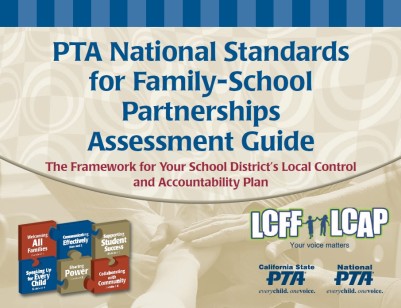 The PTA National Standards for Family-School Partnerships Assessment Guide is based on extensive research over the past 20 years. It was developed with the guidance and support of prominent education leaders and practitioners in the field of family engagement across the country. It provides specific goals for each of six accepted family engagement standards, as well as indicators for measuring whether those goals are being met.
The PTA National Standards for Family-School Partnerships Assessment Guide is based on extensive research over the past 20 years. It was developed with the guidance and support of prominent education leaders and practitioners in the field of family engagement across the country. It provides specific goals for each of six accepted family engagement standards, as well as indicators for measuring whether those goals are being met.
PTA recommends that every school district’s Local Control and Accountability Plan (LCAP) seeks to address each of the standards and that the various indicators be used to facilitate local conversations among parents and educators about how best to build stronger family-school partnerships and measure progress based on the priorities and needs of the community.
Download the complete Assessment Guide. (Also available in Spanish.)
More resources at are available at pta.org/nationalstandards.